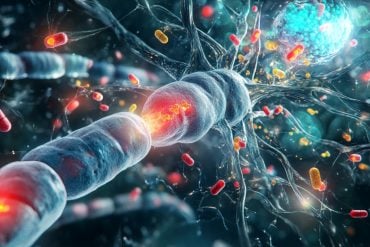- Possible evidence of clinical activity in Alzheimer’s disease patients treated with TPI 287
- Drug administration was generally well-tolerated
- Results support further exploration of TPI 287 for treatment of neurodegenerative diseases
Source: Cortice Biosciences, Inc.
Neuroscience Business Press Release
Cortice Biosciences announced today results from placebo-controlled, double-blinded Phase 1 studies evaluating TPI 287, a brain penetrable microtubule stabilizing agent, for the treatment of Alzheimer’s disease, progressive supranuclear palsy (PSP) and corticobasal syndrome (CBS). All three of these indications, known as “tauopathies” and for which no disease-modifying therapies exist, are associated with continuous neurodegeneration and ultimate patient death. These results were presented yesterday afternoon by the Principal Investigator, Dr. Adam Boxer, Professor of Neurology at the University of California San Francisco School of Medicine, during the 2017 Clinical Trials on Alzheimer’s Disease (CTAD) conference. Funding for these trials was provided by grants from the Alzheimer’s Association, CBD Solutions, and the Tau Consortium.
TPI 287 is a novel microtubule stabilizing agent that readily penetrates the blood-brain barrier. Results from a number of laboratory studies have shown that microtubule function critical for neuronal cell survival, which is regulated in large part by the microtubule associated protein, tau, is disrupted as a consequence of abberant accumulation of hyperphosphorylated tau—a hallmark of neurodegenerative tauopathies. Hence, TPI 287 may abrogate or even reverse the course of such diseases by stabilizing disrupted microtubules and compensating for dysfunctional tau. Indeed, treatment of tauopathy mouse models with TPI 287 and other brain-pentrable microtubule stabilizing agents improves cognitive performance and/or improves neuronal activity. These results justify exploration of proof-of-concept with TPI 287 in affected patients.
Patients in these studies were enrolled into two separate tauopathy protocols depending upon diagnosis; Alzheimer’s disease patients (all with mild-to-moderate disease severity) were treated in protocol TPI-287-AD, and patients with PSP or CBS were treated in protocol TPI-287-4RT. CBS diagnoses were refined by amyloid-PET imaging. The primary endpoint of both trials was safety. Prospectively planned exploratory analyses included clinical cognitive assessments and changes in defined cerebrospinal fluid (CSF) biomarkers at 12 weeks. Per protocols, patients were randomized 8:3 in three sequential cohorts to receive 4 doses of TPI 287 at either 2.0, 6.3, or 20 mg/m2 or placebo via intravenous infusion every 3 weeks.
At the time of final analysis 29 patients with mild-to-moderate Alzheimer’s disease had been randomized in TPI-287-AD (20 received drug and 9 received placebo) and 44 patients had been randomized in TPI-287-4RT (32 received drug and 12 received placebo). In TPI-287-4RT, 14 and 30 patients were diagnosed with PSP and CBS, respectively. Treatment arms were well-balanced with regard to patient age, gender, and baseline cognitive test scores.
TPI-287-AD: Exploratory clinical analyses
Reported yesterday, 26 patients were eligible for cognitive assessment via the Mini-Mental State Exam (MMSE) before and 12 weeks after commencing treatment (18 drug, 8 placebo). Declining MMSE scores are associated with increasing degrees of disease severity. After 12 weeks from the beginning of treatment, the median change in MMSE scores in the patients treated with TPI 287 was 0.0 (±2.4) points (no change), and the median change in patients treated with placebo was ‑3.0 (±1.6). This result was statistically significant (p=0.04). Although TPI-287-AD was based on a randomized double-blinded study design, this difference may have been due to a greater than expected decline of the placebo treated group.
TPI-287-4RT: Exploratory clinical outcomes
Reported yesterday, 42 patients (30 drug, 12 placebo) were eligible for assessment via the Schwab and England Activities of Daily Living (SEADL) and Clinical Dementia Rating sum of boxes (CDR-SB) scales. No differences in median SEADL score changes were observed in either of the TPI 287 treatment or placebo cohorts after 12 weeks. Interestingly, patients treated with TPI 287 performed worse on the CDR-SB assessment vs. placebo after 12 weeks; the median change was 0.5 (±1.6) points in the patients treated with TPI 287, and the median change was -0.75 (±1.8) points in the patients treated with placebo. This difference was was statistically significant (p=0.03). A positive change correlates with a worsening of symptoms.
Forty-two patients in TPI-287-4RT were analysed for CSF levels of YKL-40, a putative biomarker of inflammation. After 12 weeks of treatment, the median change of YKL-40 levels was -5.2% (±9.1) from baseline in all TPI 287 treated patients (n=30) and was +1.0% (±15.9) in the patients treated with placebo (n=12). This difference was statistically significant (p=0.02).
Safety
All patients in both protocols were evaluable for safety. All but 1 of the treatment-related adverse events recorded were considered non-serious (Grade 1 and 2) and generally well-balanced between the drug and placebo arms. Notably, 7 (70%) of PSP patients treated with TPI 287 experienced a higher incidence of falls relative to 1 PSP patient (25%) treated with placebo.
In TPI-287-AD, 2 episodes (10%) of non-serious hypersensitivity reactions were observed in patients treated with TPI 287 (vs. none in the placebo arm). One additional patient (5%) who was treated with TPI 287 experienced a Grade 3 anaphylactoid reaction, which was characterized as a serious adverse event. These particular adverse events were thought to be due to presence of Koliphor®, a commonly used emulsifier in taxane formulations (including the TPI 287 formulation), which is known to be immunogenic. Based on these adverse events, treatment in TPI 287-AD was halted prior to completion of the 20 mg/m2 dose cohort. No serious adverse events, including anaphylactoid reactions, were observed in the TPI-287-4RT trial.
“We are encouraged by the results obtained with TPI 287 in the mild-to-moderate Alzheimer’s disease population,” said George Farmer, Ph.D., Chief Executive Officer of Cortice. “This indication as well as the rare diseases with similar etiologies associated with dysfunctional tau protein remain significant unmet medical needs for which TPI 287 could provide some benefit to patients. We congratulate Dr. Boxer on the execution of these trials and furthermore, commend his success in completing the very first study designed to investigate drug activity in a pure CBS patient population.”
Notes:
About TPI 287
TPI 287 is a novel taxoid which binds to and stabilizes the assembly of microtubules similarly to commonly used taxanes, including paclitaxel (Taxol® and Abraxane®) and docetaxel (Taxotere®). Microtubule stabilization by TPI 287 may have potential for the treatment of neurologic disorders affected by tau protein pathology. These include tauopathies such as Alzheimer’s disease and orphan diseases, such as progressive supranuclear palsy, corticobasal syndrome, and frontotemporal dementia. In oncology treatment settings, microtubule stabilization leads to mitotic arrest and cancer cell death. TPI 287 has advantages over other taxanes for the treatment of brain diseases due to its ability to penetrate the central nervous system, which is often shielded from systemic administration of many other drugs.
About Alzheimer’s disease
Alzheimer’s disease, the most common form of dementia, is a progressive neurodegenerative tauopathy associated with problems in memory, behavior, and activities of daily living. Age is the biggest risk factor, as most patients with the disease are 65 years or older. Presense of insoluble aggregates of brain beta amyloid and tau proteins detected postmortem are typical of Alzheimer’s disease pathology. According to the Alzheimer’s Association, approximately 5 million people are currently afflicted in the U.S. Medications are approved to ameliorate symptoms, but no known cures exist for Alzheimer’s disease. See www.alz.org for more information.
About 4RT tauopathies
4-repeat tau (4RT) tauopathies, including progressive supranuclear palsy (PSP) and corticobasal syndrome (CBS), are characterized by a particular amino acid signature in tau, a key neuronal regulatory protein. This amino acid signature contributes to tau dysfunction resulting in microtubule disruption and tau aggregation in neurons. Age of onset is typically younger than that of Alzheimer’s disease, while symptoms overlap with Alzheimer’s and Parkinson’s disease, but are distinct to each disease. According to CurePSP, 15,000-20,000 people are afflicated with PSP and about 1,600 people are CBS in the U.S. No known cures exist for these diseases. See www.psp.org for more information.
About Cortice Biosciences: Cortice Biosciences, Inc. is a clinical-stage drug development company developing novel therapies for oncologic and neurologic disease indications with urgent unmet medical need. More information can be found at www.corticebiosciences.com.
Safe Harbor Statement: This media release may contain forward-looking statements about Cortice Biosciences, which can be identified by the use of terminology such as “will,” “would,” “should,” “expects,” “anticipates,” “intends,” “plans,” “believes,” “may,” “estimates,” “predicts,” “projects,” or similar expressions intended to identify such statements. These statements reflect the current views of Cortice with respect to future events, are based on assumptions, and subject to risks and uncertainties.
Source: Cortice Biosciences, Inc.
Publisher: Organized by NeuroscienceNews.com.
Image Source: NeuroscienceNews.com image was provided by Keck Medicine USC.
*Disclaimer:* The opinions expressed in this business news release are soley those of Cortice Biosciences, Inc. They do not represent the opinions of NeuroscienceNews.com, its owners or employees. NeuroscienceNews.com does not endorse Cortice Biosciences, Inc. or its products.
NeuroscienceNews.com, its owners or employees have received no payments for this news release, nor do we have financial interest in Cortice Biosciences, Inc. NeuroscienceNews.com, its owners and employees express no conflict of interest.
NeuroscienceNews.com was not involved in the creation of this post.







